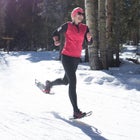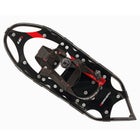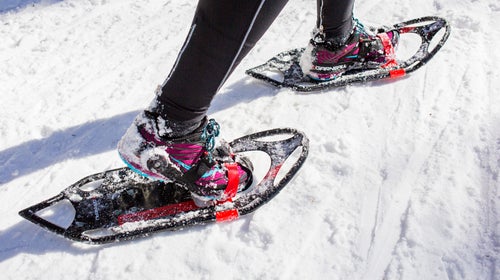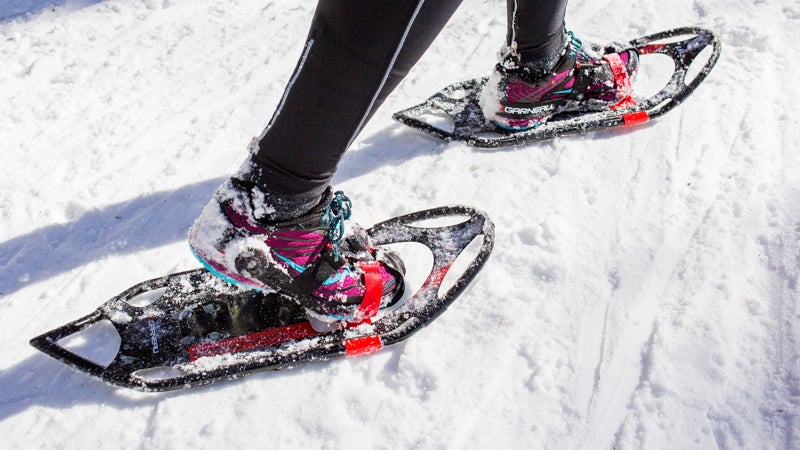Like most places, Taos County hasn’t seen much snow this winter, which was bad news for the snowshoe race I was scheduled to run last Sunday at the in Red River, New Mexico.
 The author approaching the finish of a 10K snowshoe race.
The author approaching the finish of a 10K snowshoe race. Course 721.
Course 721.Rather than have athletes navigate patchy singletrack, organizers of the Low O2 Challenge decided to hold the event on the area’s groomed cross-country ski trails. The new course was firmly packed and in some places very icy. There was no powder to break, no sketchy off-camber sections to traverse. Just two hilly loops of wide-open trails for the taking.
Which was perfect for the type of snowshoes I was wearing.
But first, a primer.
Unlike mountaineering snowshoes, which come in various sizes that correspond to your weight, running snowshoes are all fairly similar. To facilitate normal running form, they’re light (fewer than three pounds per pair) and small (at least seven inches wide by 20 inches long, as mandated by the ).��
Over the years, gear companies have tried various ways to shave weight from their racing kicks by incorporating features such as composite or titanium frames, aluminum crampons, minimal decking, and single-pull bindings.
And all those features have worked. Year after year, the very best snowshoe runners show up at the National Championships wearing the latest racing models from companies such as , , and .
But that might change with Louis Garneau’s recent crack at a racing snowshoe. At 1.6-pounds per pair, the new is significantly lighter and sleeker than any other racing snowshoe on the market.
How? Well, for starters, the aircraft-grade aluminum frame is only a half-inch in diameter. Frame weight alone accounts for one-third of snowshoe weight, so LG literally sheds pounds by opting for a lower profile, thinner skeleton. And amazingly, the narrow frame doesn’t sacrifice strength and durability. The aluminum band comes together at the tapered tail—the least stressed area of the snowshoe—where it is connected with a durable nylon tip.
The deck is a polyurethane-polyethylene weave that connects to the frame at 11 locations, meaning there are plenty of strategically placed cutouts (gaps between the decking and the frame) that also save on weight.
Although the mesh decking is super strong, it’s also slick, which is really my only complaint about this product. If you’re on uneven singletrack, your foot will slip. Say, for example, the trail the tilts to the left. Your heel, when it comes down on the decking, will slide to the left. It’s a little annoying. I think putting some skateboard grip on the heel area might help, but I haven’t tried that yet. Perhaps changing shoes would help, too (I wear Saucony Peregrines).��
However, if you’re on a mostly smooth surface, you can power forward, no problem. That’s why the Course 721 was great for my race. I could soar over those groomed cross-country trails and not worry about slipping and sliding to either side.
This confidence was boosted, of course, by also having toothy crampons underfoot. Racing snowshoes don’t boast super-aggressive cleats, but they typically offer enough grip to keep you grounded whether you’re pulling yourself up a mountain or flying down an icy hill.
Lastly, a dual boa closure—a rarity among racing snowshoes—keeps your entire foot secure in the 0.13-pound binding (LG calls it a harness). You’ll never worry about pulls or buckles wriggling loose as you run, and because the Boas tighten evenly across your feet, hot spots and toes falling asleep are not a concern.
I won the race last weekend and will compete in the in Vermont on March 1. I’m a little skeptical how the Course 721s will do on technical singletrack and fresh powder, but I am definitely not worried about them weighing down my carry-on.
$250;


